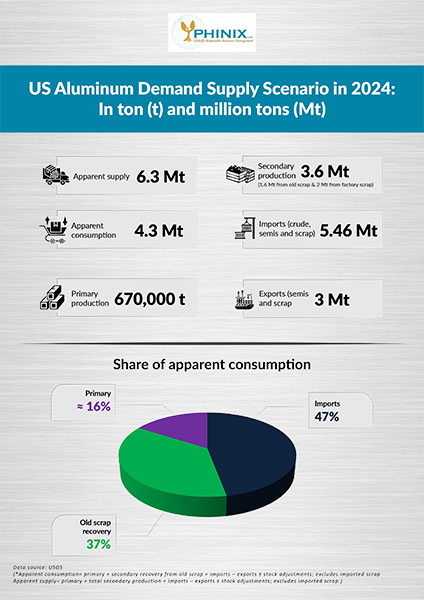
Steve Allen | dreamstime.com
President Donald Trump announced his 25 percent tariffs on imported steel and aluminum, saying, "Our nation requires steel and aluminum to be made in America, not in foreign lands."
Having strong domestic production of steel and aluminum is important for national security reasons, which is the rationale Trump used for instituting the tariffs under Section 232 of the Trade Expansion Act of 1962. However, we can increase secondary aluminum production in this country to combat imports if we recover more aluminum for recycling.
Recent U.S. Geological Survey data show that the U.S. recovered 3.6 million tons of aluminum in 2024 from about 4.3 million tons of aluminum consumed. Fifty-six percent of the aluminum recovered was factory, or prime, scrap, and 44 percent was from end-of-life products and infrastructure.

Meanwhile, the country imported 5.46 million tons of aluminum (semifinished products and scrap) last year. Canada shipped 56 percent of those aluminum imports, while the United Arab Emirates supplied 8 percent and China supplied only 3 percent. In summary, aluminum recovered from old scrap contributed about 37 percent of apparent consumption, while imports accounted for 47 percent and U.S. primary production accounted for about 16 percent.
The present situation in the U.S. underlines the importance of raising end-of-life aluminum recycling, particularly for UBCs or used beverage cans, which would enable growth in secondary aluminum production.
Despite the resourcefulness of aluminum recycling, more than 61 billion UBCs—over $1.2 billion worth of aluminum—were diverted from the recycling stream in 2023 to landfills that otherwise could have been recycled and made into new cans. This loss has a significant negative impact on the environment and the economy. According to research conducted by Phinix LLC, the U.S. has landfilled about 90 million tons of aluminum. The average amount of aluminum landfilled yearly since 2010 is about 2.6 million tons. The country saw an eight-fold increase in landfilling in 60 years as indicated by Environmental Protection Agency data, despite an increasing focus on recycling and conservation in that time frame.
Tariffs and recycling are interconnected. While we are “moving the earth and heaven” to minimize the negative effect of tariffs on our industry, I believe we need to “move the earth” to increase UBC recycling rates from 43 percent to an achievable 75 percent. Landfilling the aluminum we import when it reaches the end of its life is not smart.
More recycling will reduce imports, cut primary aluminum consumption and eliminate the need for tariffs. Tariffs raise raw material and consumer prices, cause trade wars and disrupt the supply chain—none of which is conducive to industry growth.
Let's make recycling relevant again, starting with UBCs. They are in all our homes and should be in all our recycling bins. I believe a 75 percent UBC recycling rate is achievable and necessary. If you share that view, join UBC 75, an independent project and LinkedIn group I’m leading to increase the U.S. UBC recycling rate. A platform like this can be a game changer in raising awareness about UBC recycling and lobbying for policy changes. I’ll outline my thoughts on how to do so in subsequent letters.
We have the power to increase secondary aluminum production in the U.S. and decrease our imports of tariffed primary aluminum, but we are discarding that opportunity when we throw away our UBCs rather than recycling them.
Subodh Das, Ph.D., is a globally recognized serial entrepreneur in industrial, academic and technology-based companies and founder and manager of several aluminum research consortia involving multidisciplinary collaborations among industry, universities and U.S. national laboratories. He is the CEO of Phinix LLC, which provides research, development, technical and marketing consulting, expert legal testimony and due-diligence services in the areas of process and product development, commercialization and recycling for light metals (aluminum, magnesium and titanium), e-scrap, municipal solid waste and rare earth elements.
Latest from Recycling Today
- China to introduce steel export quotas
- Thyssenkrupp idles capacity in Europe
- Phoenix Technologies closes Ohio rPET facility
- EPA selects 2 governments in Pennsylvania to receive recycling, waste grants
- NWRA Florida Chapter announces 2025 Legislative Champion Awards
- Goldman Sachs Research: Copper prices to decline in 2026
- Tomra opens London RVM showroom
- Ball Corp. makes European investment





